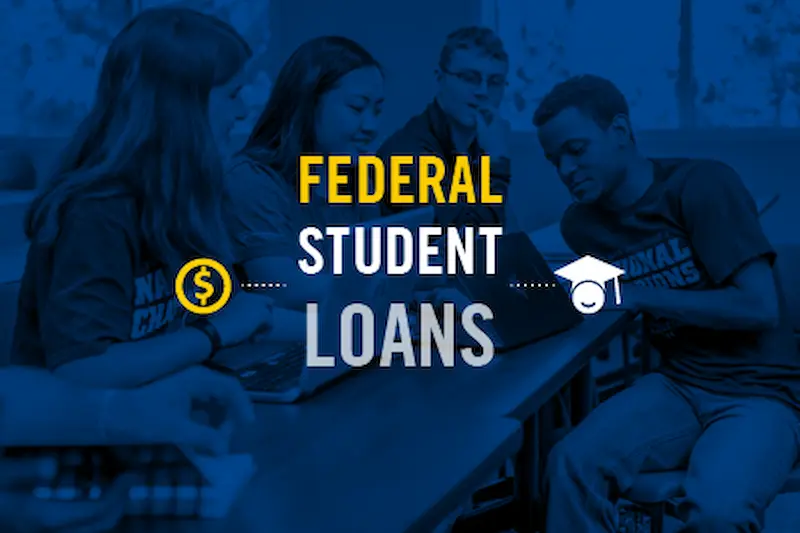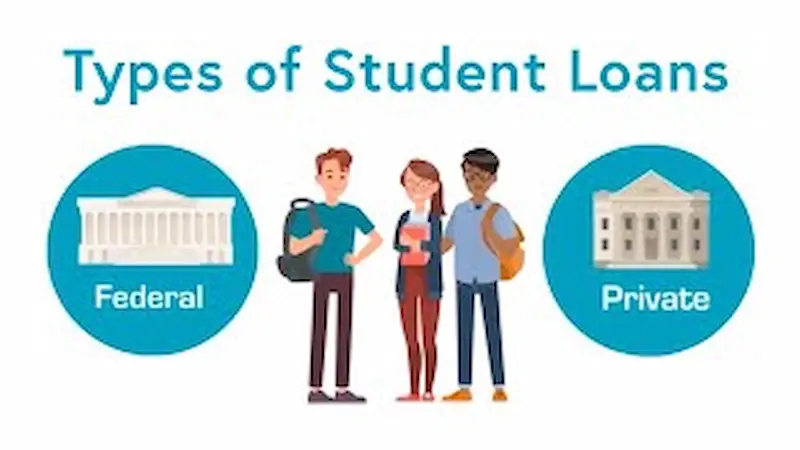Paying for college can be stressful, and navigating the world of student loans can feel like a maze. If you’re planning to fund your education, understanding federal student loan programs explained is crucial. Federal student loans are loans offered by the U.S. government, designed to help students pay for college or career school while offering benefits that private loans don’t. The goal is to make education more accessible and affordable, but it’s important to know how each program works so you can make smart borrowing decisions.
In this guide, we’ll break down the types of federal student loans, how to apply for them, repayment options, and tips for managing them effectively.
What Are Federal Student Loans?

Federal student loans are financial aid loans provided directly by the federal government. Unlike private loans, these loans come with:
- Lower interest rates than most private lenders.
- Flexible repayment plans tailored to your income and circumstances.
- Deferment and forbearance options, allowing temporary suspension of payments during financial hardship.
- Loan forgiveness programs, for certain careers or repayment strategies.
They’re intended to help students cover tuition, fees, books, and even living expenses without putting you in unmanageable debt if you borrow wisely.
Main Types of Federal Student Loan Programs Explained

The federal government offers several types of loans, each designed for different needs and circumstances. Here’s a detailed breakdown:
1. Direct Subsidized Loans
- Who qualifies: Undergraduate students demonstrating financial need.
- Key feature: The government covers interest while you’re in school at least half-time, during the grace period (6 months after leaving school), and during any deferment periods.
- Benefit: Since interest doesn’t accrue while you’re in school, this loan is generally the most cost-effective option.
Example: If you borrow $5,000, you won’t owe extra interest during your time in school, saving you money in the long run.
2. Direct Unsubsidized Loans
- Who qualifies: Both undergraduate and graduate students, regardless of financial need.
- Key feature: Interest starts accruing as soon as the loan is disbursed.
- Tip: Consider paying the interest while in school. Even small payments can prevent interest from compounding and increase your long-term savings.
Example: A $5,000 unsubsidized loan accrues interest immediately, which adds to the total amount you’ll owe if unpaid.
3. Direct PLUS Loans
- Who qualifies: Graduate students and parents of dependent undergraduate students.
- Key feature: Can cover the remaining cost of education not covered by other financial aid.
- Important: Requires a credit check and generally carries a higher interest rate than other federal loans.
- Benefit: Helps fill the gap when other federal aid doesn’t cover your full cost of attendance.
Example: If tuition and living expenses total $30,000, and you have $20,000 in other aid, a PLUS loan can cover the remaining $10,000.
4. Direct Consolidation Loans
- Who qualifies: Borrowers with multiple federal student loans.
- Key feature: Combines multiple federal loans into a single loan with one monthly payment.
- Benefit: Simplifies repayment, reduces the number of monthly bills, and can extend the repayment term, lowering monthly payments (though total interest may increase).
Example: If you have three loans with different monthly payments, consolidating them means one predictable monthly payment.
How to Apply for Federal Student Loans
Applying is simpler than it sounds. Here’s a step-by-step guide:
- Complete the FAFSA (Free Application for Federal Student Aid): This form determines your eligibility for federal student loans and other aid, like grants and work-study programs.
- Review your financial aid award: After submitting the FAFSA, your school will send an award letter outlining your loan options and amounts.
- Accept the loans you need: Choose how much you want to borrow. You’re not required to take the full amount offered.
- Sign the Master Promissory Note (MPN): This legal document binds you to repay your loan according to federal terms.
Tip: Always compare loan options and borrow only what you need to minimize debt after graduation.
You may also like to read this:
How To Budget While Paying Student Loans Without Stress
Top Money Saving Plans For Graduates To Secure Your Future
Best Financial Habits For College Students To Manage Money
How To Build A Student Budget Plan For College Success Today
Simple Financial Planning For Beginners: Easy Money Tips
Repayment Options for Federal Loans
One of the biggest advantages of federal loans is flexibility in repayment. Some common plans include:
- Standard Repayment Plan: Fixed monthly payments over 10 years. Quickest way to pay off loans, but payments may be higher.
- Graduated Repayment Plan: Payments start lower and increase every two years. Ideal if your income is expected to rise over time.
- Income-Driven Repayment Plans (IDR): Monthly payments are calculated based on your income and family size, sometimes as low as $0. Plans include PAYE, REPAYE, and IBR.
- Public Service Loan Forgiveness (PSLF): If you work full-time in qualifying public service jobs and make 120 qualifying payments, the remaining loan balance is forgiven.
Tip: Choosing the right repayment plan can make a huge difference in your financial comfort and stress level.
Tips for Managing Federal Student Loans
Managing loans responsibly ensures that you don’t accumulate unnecessary debt. Here are some practical tips:
- Borrow only what you need: Avoid taking the full loan amount if you don’t need it.
- Pay attention to interest: Know when interest accrues and consider making small payments during school.
- Stay on top of your payments: Late payments can hurt your credit and result in penalties.
- Explore forgiveness programs: Certain careers, like teaching, public service, or government roles, may offer loan forgiveness.
- Keep track of your loans: Use the Federal Student Aid website to monitor balances, interest, and repayment status.
Final Thoughts
Understanding federal student loan programs explained is essential for anyone planning to fund higher education. With federal loans, you gain access to affordable interest rates, flexible repayment options, and potential forgiveness programs—benefits you won’t typically get with private loans. By knowing the types of loans, how to apply, and how repayment works, you can make smarter financial choices, avoid unnecessary debt, and invest in your education confidently.
Remember, federal student loans are tools to help you succeed. Use them wisely, stay informed, and plan ahead for a debt-free—or at least manageable—financial future.
FAQs About Federal Student Loan Programs
1. What are federal student loans?
Federal student loans are loans funded by the U.S. government to help students pay for college or career school. They typically offer lower interest rates, flexible repayment plans, and forgiveness options compared to private loans.
2. Who is eligible for federal student loans?
Eligibility depends on the type of loan. Most loans require you to be a U.S. citizen or eligible non-citizen, enrolled at least half-time in an eligible school, and have completed the FAFSA. Some loans, like Direct PLUS loans, may also require a credit check.
3. What is the difference between subsidized and unsubsidized loans?
Subsidized loans: Interest is paid by the government while you’re in school, during deferment, and grace periods. Available only to undergraduates with financial need.
Unsubsidized loans: Interest accrues from the time the loan is disbursed, regardless of financial need, and is available to both undergraduates and graduates.
4. How much can I borrow with federal student loans?
The amount depends on your year in school, your dependency status, and the type of loan. Schools will provide an award letter outlining the maximum loan amounts you are eligible for.
5. How do I apply for federal student loans?
Start by completing the FAFSA (Free Application for Federal Student Aid). After your school reviews your FAFSA, you will receive a financial aid award letter with available federal loans. Accept the loans you need and complete the Master Promissory Note (MPN).





